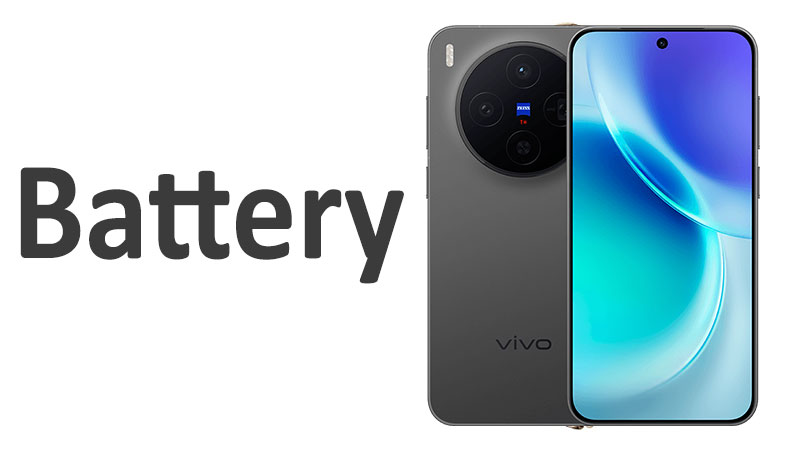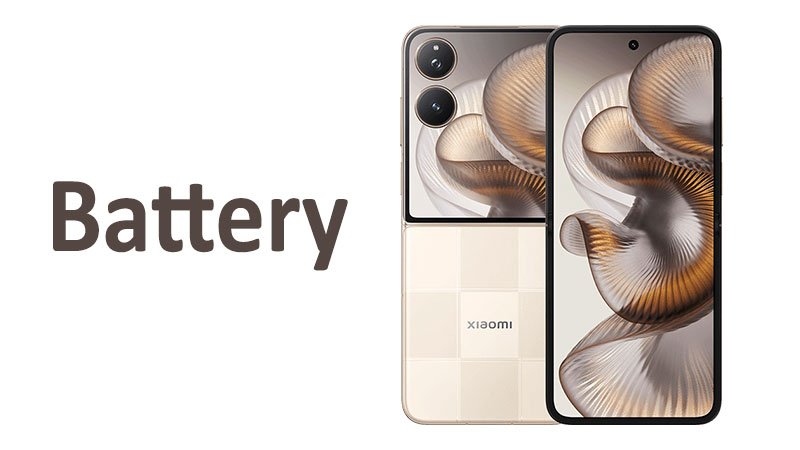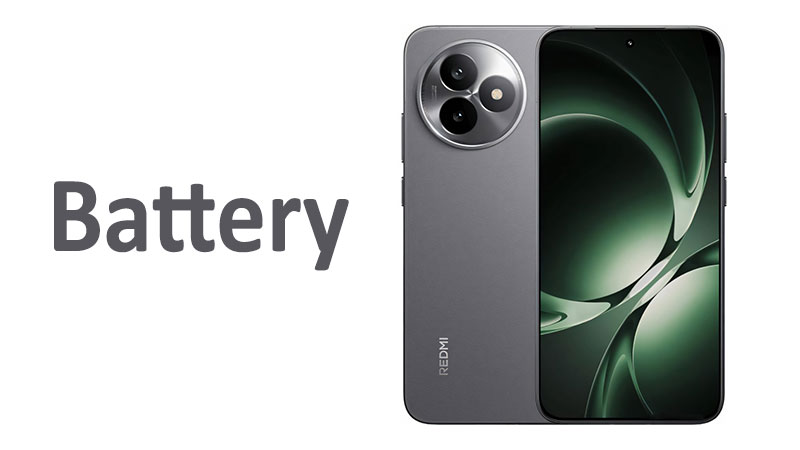The vivo X300 Battery system defines its endurance and power management strategy. This critical component features a massive 6040 mAh capacity. It also boasts 90 W wired charging capabilities. This combination promises exceptional longevity and ultra-fast refueling speeds. The phone utilizes advanced Silicon-Carbon, or Si/C Li-Ion, technology. This Si/C composition maximizes energy density. We will thoroughly investigate the three pillars of this battery system. This analysis covers capacity, charging speed, and real-world battery life performance.
The 6040 mAh Capacity: Silicon-Carbon Technology
The X300 features a truly immense battery size of 6040 mAh. This capacity is significantly larger than the standard flagship average. Most competitors settle around the 5000 mAh mark. This large size alone guarantees extended usage times for most users. This massive capacity addresses the core demand of power users. They require a phone that lasts well beyond a full day of use.
The physical size of the battery contributes directly to the phone’s overall volume. Vivo successfully integrated this large cell into the X300 chassis. This is a remarkable feat of internal engineering. It required careful management of the phone’s other internal components. This generous capacity is the biggest factor in battery life. It provides the foundation for extreme usage scenarios.
Silicon-Carbon (Si/C) Li-Ion Technology
The battery type is specified as Si/C Lithium-Ion. This is a next-generation evolution of traditional lithium-ion cells. Silicon-Carbon anode material allows for higher energy density. This means more power can be packed into the same physical space. This technology is crucial for achieving the large 6040 mAh figure.
This advanced composition helps mitigate the bulk associated with large cells. It allows the X300 to maintain a relatively manageable size. Traditional lithium-ion batteries would make the phone much thicker. Si/C is a key feature for a modern, high-capacity phone. This innovative chemistry provides a clear technological advantage.
Specialized Comparisons: Capacity to Competitors
The X300’s 6040 mAh capacity far surpasses key competitors in the flagship segment. Most rivals cap their battery size at 5000 mAh. The 1040 mAh difference is a substantial margin. This provides the X300 with an immediate advantage in pure endurance. It places the X300 among the longest-lasting mobile devices available.
Even some specialized gaming phones do not reach this energy level. This high capacity confirms the X300’s positioning as a true endurance champion. It offers significant battery life benefits for heavy users. This is a crucial selling point for the device. The large capacity is truly best-in-class.
Pros and Cons of 6040 mAh![]()
A significant pro is the exceptional and predictable battery life. Users gain peace of mind and less reliance on mid-day charging. The large capacity also supports the powerful processor and 5G modem easily.
The main con relates to the phone’s overall physical size and weight. While Si/C technology helps, 6040 mAh is inherently heavy. This extra bulk contributes to the phone’s total mass. Buyers must accept a slightly heavier phone for this extreme longevity.
Endurance and Real-World Battery Life Performance
The 6040 mAh capacity translates directly into outstanding real-world usage times. The phone is capable of easily exceeding two days of light to moderate usage. Even under sustained, heavy load, it can consistently reach the end of a long day. This performance is a major selling point for the X300.
Usage Scenario: Intensive Gaming
Intense mobile gaming is one of the biggest drains on a smartphone battery. The X300’s large capacity manages this demand easily. Users can expect several hours of continuous, demanding gameplay. This provides stability for long competitive gaming sessions. The ample power minimizes performance throttling from low battery levels.
The 6040 mAh battery powers the high-refresh-rate screen efficiently. It also provides stable power to the complex chipset. This combination ensures sustained peak performance in games. The X300 becomes a true portable gaming champion. Its battery life supports the demanding hardware effectively.
Usage Scenario: Media Consumption
The X300 excels in video streaming and media consumption endurance. The large battery allows for many hours of continuous video playback. Users can watch full seasons of shows without needing to charge. The phone is an ideal companion for long commutes or flights. Media playback requires stable, prolonged energy delivery.
The power management software helps optimize this usage. It minimizes background drain while the screen remains active. This focus on efficiency maximizes the available playtime. The X300 offers top-tier media endurance.
Specialized Comparison: Battery Life Consistency
The X300 exhibits remarkable consistency in its battery life metrics. Unlike some phones, its performance does not drop suddenly under load. The Si/C cell maintains its voltage stability well into discharge. This consistency is a hallmark of high-quality battery engineering. Users can rely on accurate battery percentage readings.
Competitor phones often show inconsistent performance in the final 20 \text{%} of charge. The X300 manages its power delivery uniformly. This reliability is a major benefit for daily use. It provides predictable, stable power until the final moments.
90 W Wired Charging: Speed Analysis
The vivo X300 features hyper-fast 90 W wired charging capability. This extreme power output dramatically reduces charging downtime. High-wattage charging is essential for large capacity batteries. It ensures the 6040 mAh cell can be refilled quickly. This technology changes user behavior regarding charging.
Practical 90 W Charging Speeds
90 W charging is incredibly fast by modern standards. It can typically take the battery from near 0 \text{%} to 100 \text{%} in under 35 minutes. This is a revolutionary speed for a battery this large. Users can plug in the phone for a quick coffee break. This short charge provides many hours of additional runtime.
Even a quick 10-minute charge delivers substantial energy. This ten-minute boost can provide half a day of standard usage. This flexibility eliminates the need for overnight charging. Users can simply top off the phone as needed throughout the day. The 90 W speed changes the relationship with the power outlet.
Safety and Thermal Management
High-wattage charging requires sophisticated safety protocols. The X300 incorporates multiple temperature sensors and charging circuits. These systems manage heat generation carefully during the 90 W cycle. This is necessary to prevent battery degradation and overheating.
Vivo likely uses a dual-cell battery architecture. Dual-cell designs split the 6040 mAh capacity into two separate cells. This allows 45 W to be delivered to each cell simultaneously. This method is safer and more efficient than charging a single cell. It allows for sustained, rapid charging without excessive heat.
Specialized Comparison: Wired Speed vs. Rivals
The 90 W wired speed competes directly with the fastest chargers on the market. It offers a significant speed advantage over common 65 W or 45 W standards. This speed ensures the X300 is never held back by charging downtime. It provides one of the quickest recharge times in the industry.
Some competitors may offer 120 W or higher speeds. However, the X300 must charge a larger 6040 mAh capacity. The 90 W rate is therefore exceptionally effective for its size. The speed-to-capacity ratio is excellent for the X300.
40 W Wireless Charging and Convenience
The X300 also supports fast 40 W wireless charging technology. This high speed brings exceptional convenience to the charging process. 40 W is an extremely fast rate for wireless charging. Many flagship rivals still offer maximum wireless speeds below 20 W.
Wireless Speed and Practicality
The 40 W wireless charging is fast enough for quick top-ups at a desk. It reduces the time needed for a full charge significantly. A complete wireless refill might take around an hour. This is dramatically faster than previous wireless technologies. It makes wireless charging a viable primary method.
This wireless capability encourages effortless, frequent charging. Users can simply set the phone down on a compatible charging pad. This ensures the phone stays topped up throughout the workday. This constant, easy charging helps maximize the battery’s total available runtime.
Specialized Comparison: Wired vs. Wireless
The 40 W wireless speed is a strong performer. However, the 90 W wired charging is still over twice as fast. Wired charging remains the best option for immediate, urgent power needs. Wireless charging is best utilized for convenience and topping up steadily.
The X300 offers the best of both worlds with its dual-speed options. Users have the freedom to choose speed or convenience based on their current needs. This flexibility is a key advantage of the X300 battery system.
Pros and Cons of 40 W Wireless
The major pro is the sheer convenience and speed of the 40 W wireless connection. It is one of the fastest wireless speeds available today. It eliminates cable wear and tear and is easy to use.
The cons include the need for a specific, compatible 40 W wireless pad. Generic pads will only charge the phone at slower speeds. Wireless charging also generates slightly more heat than wired charging. This heat requires careful thermal management by the phone.
Reverse Charging Capabilities
The X300 is also equipped with reverse wired charging capability. This feature allows the phone to act as a power bank. It can charge other devices using a standard charging cable. This adds significant utility to the phone’s large 6040 mAh battery.
Practical Uses of Reverse Charging
Reverse charging is ideal for powering small accessories and wearables. Users can charge their wireless earbuds, smartwatches, or fitness trackers. It provides a convenient, cable-based method for emergency power sharing. This is useful for charging a friend’s low-battery phone in a pinch.
The reverse wired charging speed is typically slow, often around 5 W or 10 W. It is not designed for rapid charging large devices. However, this speed is more than enough for small accessories. It utilizes the phone’s existing charging port for power output. This is a handy feature for minimizing the number of portable chargers.
Specialized Comparison: Reverse Wired vs. Wireless
Reverse wired charging is more efficient than reverse wireless charging. It transfers power directly through the cable. This minimizes energy loss during the transfer process. Reverse wired charging also works universally with any compatible cable. This makes it more practical and reliable for power sharing.
Reverse wireless charging is limited to devices that support the Qi standard. The X300 focuses on the more robust and efficient wired method. This choice maximizes the utility of the feature. It ensures stable power delivery to small devices.
Buyer’s Consideration: Power Sharing Utility
Buyers should view the reverse wired charging as a useful bonus feature. It should not be considered a primary feature for the purchase decision. However, the ability to power small accessories is invaluable when traveling. It leverages the massive 6040 mAh capacity effectively. This feature adds significant versatility to the phone.
Important Buyer Knowledge for Battery Longevity
Understanding how to maintain battery health is crucial for the X300 owner. The advanced Si/C technology resists degradation well. However, user habits still affect the battery’s long-term health. The phone should maintain its capacity for several years with proper care.
Optimized Charging Practices
Avoid consistently discharging the battery to 0 \text{%} whenever possible. Try to keep the charge level between 20 \text{%} and 80 \text{%} for maximum lifespan. The 90 W charging speed makes short, frequent top-ups easy. This practice is better for the battery than a full 0 \text{%} to 100 \text{%} cycle.
Vivo includes smart charging features to manage this automatically. These features learn the user’s schedule to slow down charging at night. They ensure the battery hits 100 \text{%} just before the user wakes up. This minimizes the time spent fully charged, which preserves cell health. Users should utilize these smart features.
Heat Management
Heat is the single greatest enemy of lithium-ion battery health. The X300’s thermal management system is excellent. However, users should avoid charging the phone in hot environments. Do not place the phone under a pillow or blanket while charging. Excessive heat during 90 W charging will slightly increase degradation over time.
Remove any thick, insulating cases during heavy 90 W charging sessions. This allows the phone to dissipate heat more easily. The 40 W wireless charging also produces more heat than the cable. Choose wired charging when maximum cooling is available. Managing temperature preserves the large 6040 mAh capacity over many years.
Software Drain and Optimization
The X300’s powerful chipset and large screen require efficient software control. Vivo’s operating system includes tools to identify battery-draining apps. Users should periodically check these settings and restrict unnecessary background activity. Closing demanding apps completely helps conserve power.
The phone’s power-saving modes are useful for extending the final percentage of life. These modes reduce screen refresh rate and limit background processes. They are essential for extending the life of the 6040 mAh battery. This ensures users get the maximum possible runtime from the massive cell.
Conclusion: An Informed Decision on the X300 Battery
The vivo X300 Battery system is a defining feature of the phone. It seamlessly combines a massive 6040 mAh capacity with revolutionary charging speeds. The use of advanced Si/C Li-Ion technology maximizes energy density. This ensures the phone offers best-in-class endurance and efficient performance.
The 90 W wired charging is exceptionally fast. It reduces charging sessions to mere minutes for a substantial power boost. The 40 W wireless charging adds unparalleled convenience and speed. The reverse wired charging feature offers valuable power-sharing utility.
The X300 is the clear choice for users prioritizing battery life and charging speed. Its 6040 mAh capacity is perfect for gamers and media consumers. It is ideal for anyone needing a two-day phone under moderate usage. The advanced battery system is a core reason to choose the X300. This system offers maximum power and minimal downtime.
Frequently Asked Questions (FAQ)
1. What is the exact battery capacity of the vivo X300?
The vivo X300 features a large 6040 mAh battery capacity.
2. What is the maximum wired charging speed on the X300?
The phone supports an extremely fast 90 W wired charging rate.
3. What is the benefit of the Si/C Li-Ion battery type?
The Si/C material allows for higher energy density. This means a larger 6040 mAh capacity fits inside the phone.
4. Does the X300 support wireless charging?
Yes, the X300 supports fast 40 W wireless charging, which is very quick for a wireless standard.
5. Can the X300 charge other devices?
Yes, it features reverse wired charging capability. This allows it to charge small accessories like earbuds via a cable.



